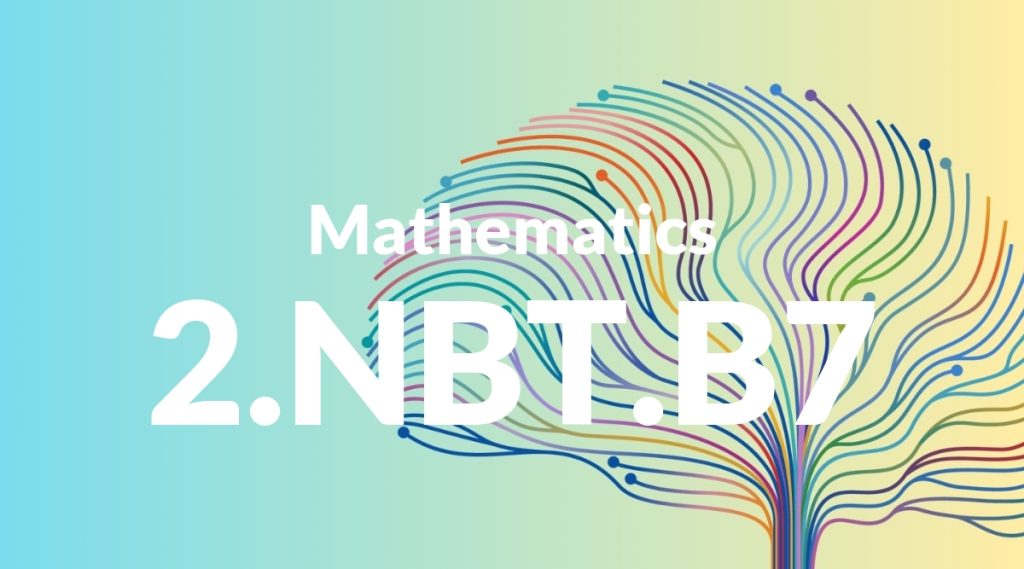Standard: 2.NBT.B7 – Add and subtract within 1000, using concrete models or drawings and strategies based on place value, properties of operations, and/or the relationship between addition and subtraction; relate the strategy to a written method. Understand that in adding or subtracting three-digit numbers, one adds or subtracts hundreds and hundreds, tens and tens, ones and ones; and sometimes it is necessary to compose or decompose tens or hundreds.
Grade level: Grade 2
Subject: Mathematics
Domain: Number & Operations in Base Ten
Teacher Overview
This standard focuses on helping students develop a solid understanding of addition and subtraction within 1000, using place value and properties of operations. It is crucial as it builds the foundation for more advanced mathematical concepts and problem-solving skills in later grades. Students should have a solid understanding of place value up to 100 and be comfortable with basic addition and subtraction facts within 20.
After mastering this standard, students will be able to tackle more complex multi-step word problems, understand deeper place value concepts, and begin learning about multiplication and division.
Common Misconception 1
A common misconception is that students may not align digits correctly when performing addition or subtraction, leading to incorrect results. This occurs because they might not fully understand the importance of place value.
Intervention 1
An effective intervention is to use graph paper to help students align numbers correctly and emphasize the importance of place value. This visual aid can help them see the correct alignment of hundreds, tens, and ones.
Common Misconception 2
Another common misconception is that students may forget to carry over or borrow when necessary. This can result in incorrect answers and indicates a lack of understanding of the regrouping process.
Intervention 2
Using base-ten blocks can be an effective intervention. These manipulatives provide a visual and tactile way for students to understand the process of carrying over and borrowing, reinforcing the concept of regrouping.
Prerequisite Knowledge
Students should have a strong grasp of basic addition and subtraction facts within 20, understand place value up to 100, and be able to use concrete models or drawings to represent mathematical concepts.
Subsequent Knowledge
Students will develop the ability to perform multi-step word problems, understand more complex place value concepts, and begin to explore multiplication and division.
Instructional Activities
- Use base-ten blocks to model addition and subtraction problems.
- Practice problems on graph paper to ensure correct alignment of digits.
- Solve word problems that involve adding and subtracting within 1000.
- Use number lines to visualize addition and subtraction.




